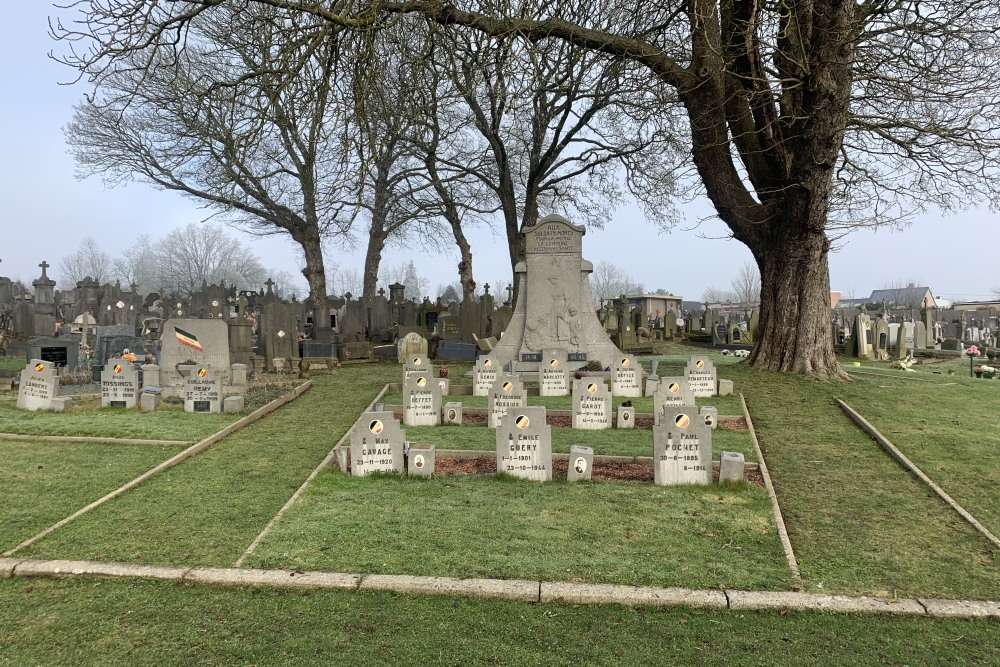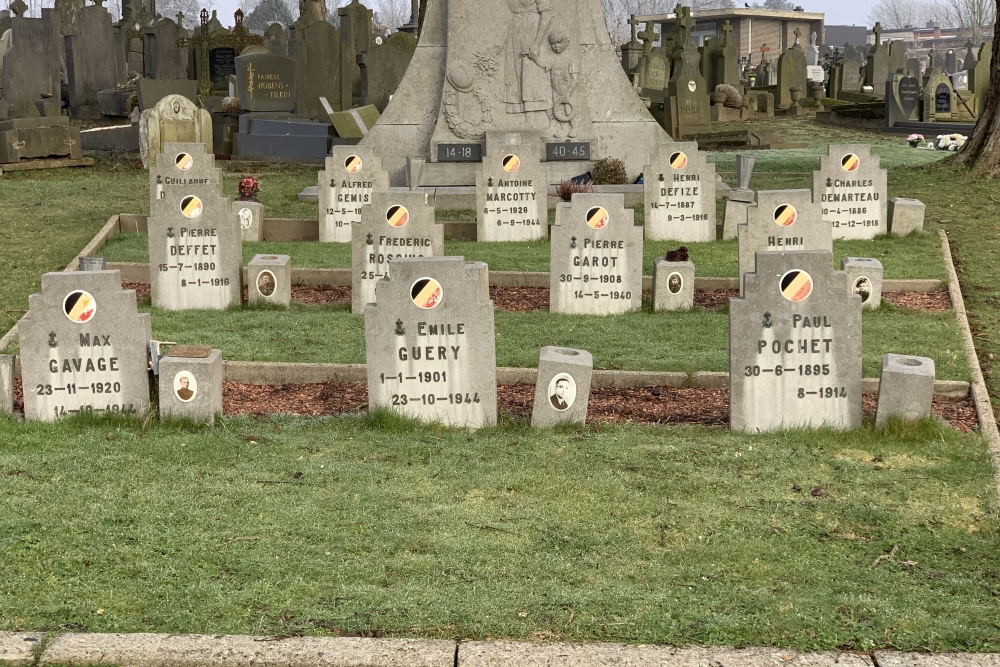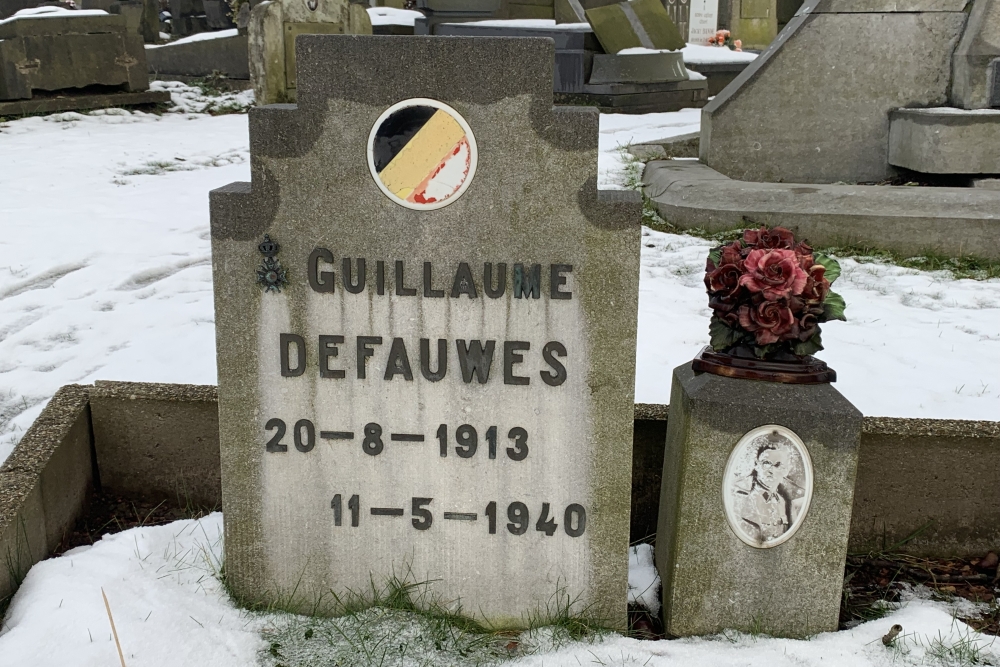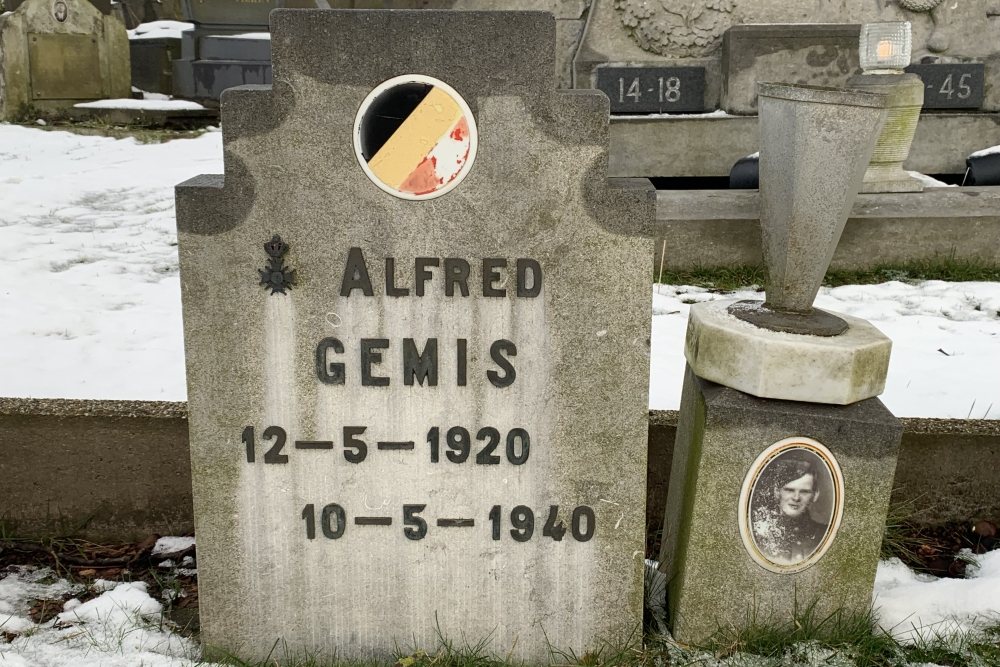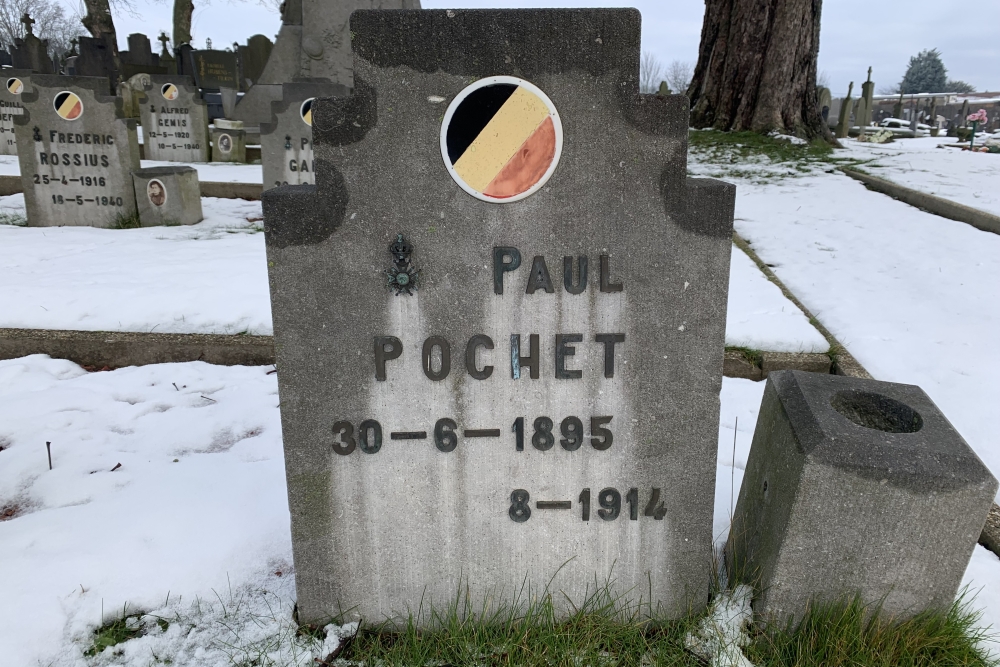Belgian War Graves Vottem
In the municipal cemetery of Vottem (Herstal) near Liège, the war memorial has 11 soldiers buried from the First and Second World Wars. Also buried at the monument are a number of veterans.
Buried are;
DEFAUWES Guillaume , age 26, soldier with the Regiment Fortresse de Liège (R.F.L.) of Fort Barchon, killed at Trembleur on May 11, 1940.
GAROT Pierre, age 31, soldier with the 26th artillery regiment, killed May 27, 1940 at Maldegem.
GAVAGE Max, age 23, perished during deportation.
GEMIS Alfred, age 19, soldier with the Regiment Fortresse de Liège (R.F.L.) of fort Eben-Emael, killed in action at Wonck (Wonck was the barracks of the garrison at rest that replaced the garrison at fort Eben-Emael on rotation) on May 10, 1940, 2 days before his 20th birthday !
GUERY Emile, age 43, civilian, died during deportation in Germany on October 23, 1944.
HOFMAN Henri, age 21, soldier, died June 6, 1947.
MARCOTTY Antoine, Age 18 !, member of the resistence, died Sept. 6, 1944.
ROSSIUS Frederic, age 24, corporal in the 4th line regiment, died May 18, 1940 at Willenbroek.
Soldiers killed during the 1st World War;
DEFFET Pierre, age 25, brigadier in the fortification artillery, died by suicide* on January 17, 1916 at Saint-Quentin-la-Motte-Croix-au-Bailly (F).
DEFIZE Henri, age 29, soldier in the transport troops of the Corps of Engineers, died of illness on March 9, 1916.
DEMARTEAU Charles, age 32, soldier with the artillerie de fortresse de Liège (A.F.L.) of the Evegnée fort, died while in captivity from illness at the Oldenburg military hospital on December 12, 1918 ! More than a month after the armistice. Apparently he was too seriously ill or quarantined to be transported home after the armistice.
POCHET Paul, age 19, soldier in the Corps of Engineers, killed at Vottem on August 6, 1914.
*Suicide among soldiers was not uncommon during the 1st World War. The hopeless situation at the front, deprivation due to cold, hunger, thirst, disease, lack of food, sleep, constant presence of stench of decomposing corpses and horses, garbage, constant noise of bombing and gunfire, screaming wounded comrades and horses, the sight of badly wounded soldiers (friends] begging for help in no-man's land, left behind wounded comrades who could not one was not allowed to be rescued from the trench, the fear of being wounded or mutilated, the fear of poison gases and flamethrowers, inadequate medical facilities, strict military discipline, and last but not least, the fear of never seeing loved ones again, could drive a soldier however strangely to suicide. How much “easier” it was to die “honorably” in battle with a suicidewish, suicide could not prevent a soldier from becoming so mentally distressed that he chose suicide over a “hero's death” at the front. Even nervous breakdown now known as PTSD, then as shellshock, kriegsneurose or choque de geure, could turn soldiers into mental wrecks in just a few weeks through a combination of the situations outlined above at the front.
Either at the front or if, after some rest or treatment, they were found fit for duty at the front again, they preferred suicide for the conditions that had led to their overexertion. Indicating how badly they had suffered at the front.
Incidentally, shellshock was primarily a diagnosis of damage to the tiny capillaries in the brain. If soldiers were in the vicinity of a heavy explosion from a shell, the pressure wave could damage the tiny capillaries in the brain was the thinking of medics at the time. Hence the term shellshock was linked to this. Later the term was used more to diagnose the mental decline of soldiers who became completely overwrought from the frontier experiences described above. To reduce the number of shellshock diagnoses, the diagnosis itself was banned from use at some point because it could “incite” other soldiers to abandon combat for that reason. The term “not yet diagnosed illness of the heart” was introduced.
Incidentally, soldiers and officers with shellshock were treated completely differently. Soldiers with shellshock were, because of their descent from the lower social class. With soldiers, it was labeled as character weakness. And thus logical that they were not up to life at the front. They were treated near the front including electrocution where wires were attached to the tongue (if they no longer wanted or could talk) or genitals to “cure” soldiers so that they preferred the front to this treatment. At the time, a logical consequence of class in which one was in whatever was not considered inhumane. On the other hand, it was also partly experimental. One did not really know how to treat soldiers who were completely apathetic, mute, capable of nothing. Was it a way to escape the front? Now, of course, we look at it completely differently.
Among officers, the elite from the upper class, it was seen as a real condition for which rest far behind the front was prescribed. They could return to the front after months of rest, whether or not they were up to the horrors that awaited them again.
Do you have more information about this location? Inform us!
Source
- Text: Ed Lewandowski
- Photos: Ed Lewandowski
Nearby
Museum
Point of interest
- Bunker MeMo 1 and 1 bis - Ile Monsin, Liège
- Mermorial Jackie Jansen, Robermont - Grivegnée (Luik)
- PAK 40 Slins - Slins
Monument
- War Memorial Milmort - Milmort (Herstal)
- War Memorial Milmort - Milmort (Herstal)
- War Memorial Milmort - Milmort (Herstal)
Cemetery
- Russian Memorial and Mass Grave Ste. Walburge Liège - Liège
- Belgian War Graves Ste. Walburge Liège - Liège
- Commonwealth War Graves Liège (Ste. Walburge) - Liège
Remembrance Stone
- Stumbling Stones Rue Devant les Ecoliers 3 - Liège
- Stumbling Stone Rue Matrognard 7 - Liège
- Stumbling Stone Rue Vinave d’Ile 16 - Liège
Fortification
- Fortfied Position Liège - Fort Liers - Liers (Herstal)
- Central intelligence and alert bunker CPRA, Liège - Luik
- Bunker Outremeuse Pont Atlas - Luik
